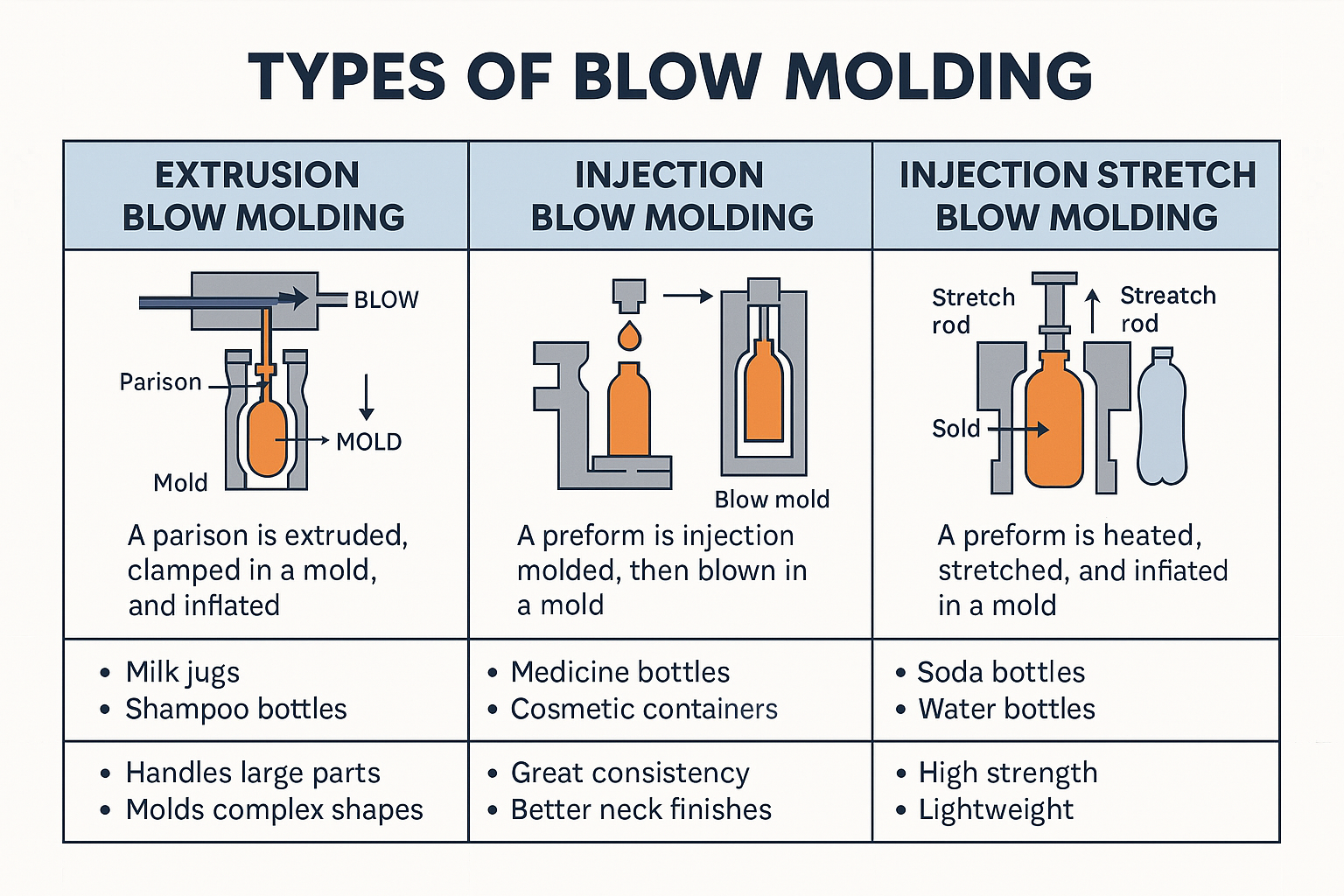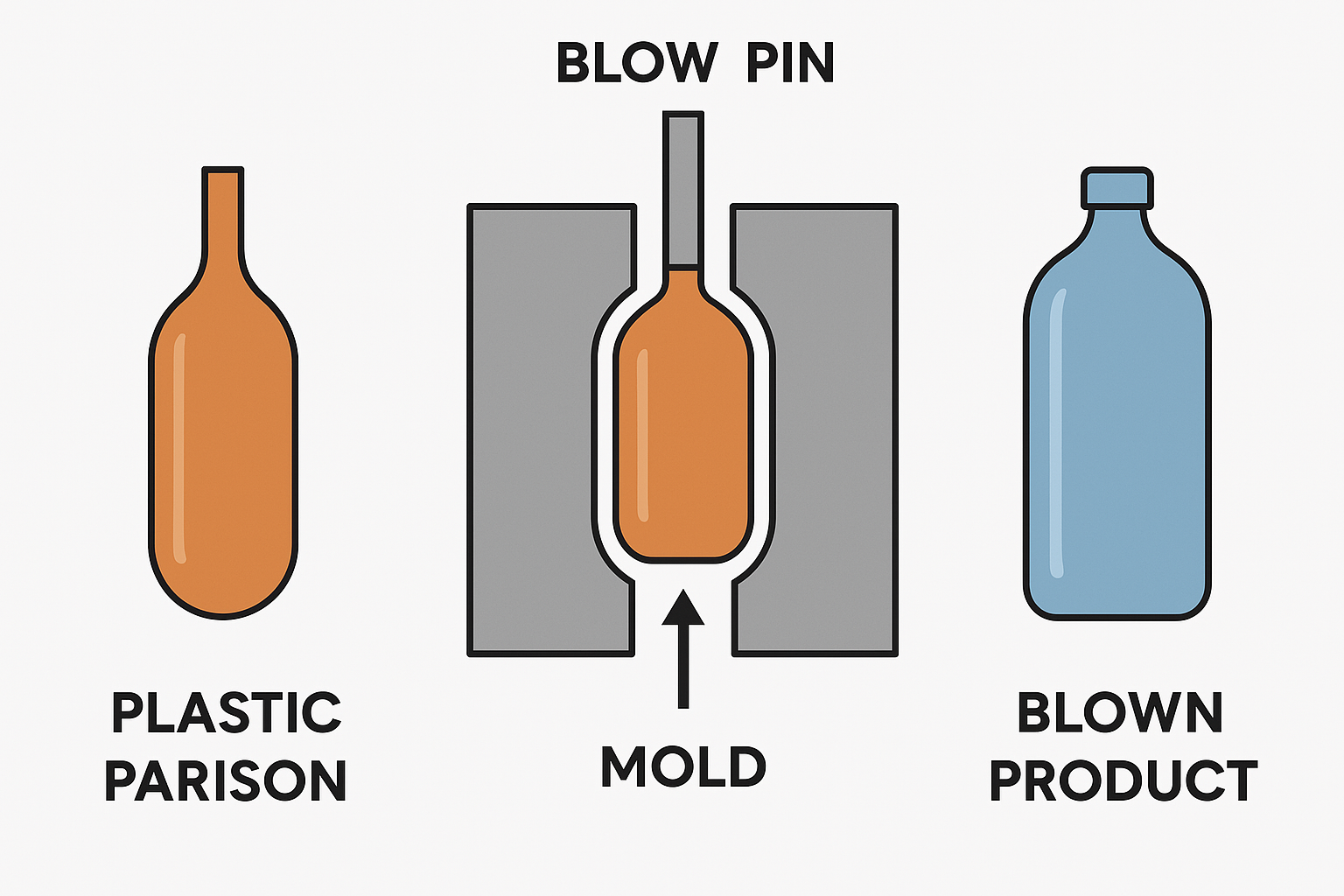BLOW MOLDING
Plastic Blow Molding is a manufacturing process used to create hollow plastic parts, such as bottles, containers, tanks, and other hollow shapes, by inflating heated plastic within a mold. Blow molding efficiently produces lightweight, durable, hollow plastic products at high volumes, making it a staple in consumer packaging, automotive, healthcare, and other industries.
Benefits of Blow Molding
- High production speed: Fast cycles allow for large-volume output.
- Cost-effective tooling: Mold costs are typically lower than injection molding.
- Lightweight parts: Ideal for packaging applications needing minimal material use.
- Good dimensional control: Especially in stretch blow molding, leading to consistent wall thickness.
- Design flexibility: Can produce various shapes with handles, threads, or custom contours.
- Recyclable materials: Supports sustainability with common use of PET and HDPE.


The Process:
The Process:
- Extrusion or Injection of Preform/Parison
- Plastic resin is melted and shaped into a tube-like piece called a “parison” (in extrusion blow molding) or formed into a preform shape (in injection blow molding).
- Mold Closing
- The mold closes around the hot plastic parison or preform, sealing the ends.
- Blowing and Inflation
- Compressed air is injected into the heated plastic piece, inflating it to conform exactly to the internal shape of the mold.
- Cooling
- The plastic cools quickly, taking the shape of the mold and solidifying into the final hollow product.
- Ejection
- The mold opens, and the finished hollow plastic component is released or ejected.
Considerations
Considerations
Volume & Production Scale: Blow molding is very efficient at scale, especially for simple hollow parts.
Part Design: Ideal if part must be hollow (like a bottle or tank) and should be avoided if parts have internal complexity.
Surface Detail and Finish: Limited in complexity – not ideal for fine surface details or tight tolerances.
Part Size: Small to medium sizes are best; consider rotational molding for very large hollow parts.
 CONSIDER
CONSIDER